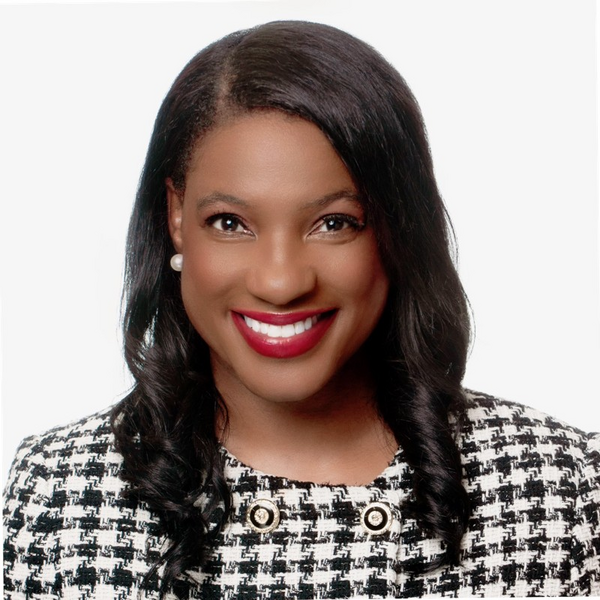Talent Development Leader
A Common Goal
With 20 years of experience as a talent development leader at companies like IBM, Deloitte, and Bank of America, Ronda Bazley Moore was well poised to add Chief Inclusion and Diversity Officer to her title at LexisNexis.
Thu Mar 09 2023


With 20 years of experience as a talent development leader at companies like IBM, Deloitte, and Bank of America, Ronda Bazley Moore was well poised to add Chief Inclusion and Diversity Officer to her title at LexisNexis.
“I’ve been able to use my experience in talent development and ability to pivot. I’m still in the business of helping organizations solve their people problems, which is what talent development leaders do. But I’m now doing that through the lens of inclusion and diversity,” she says.
“When you have talent development coming together with inclusion and diversity, you create a powerful combo to address the business’s challenges.”
Linking inclusion to leadership development
In 2020, data and analytics company LexisNexis charged Bazley Moore with increasing diverse representation among its senior levels of leadership. What that meant, she says, was finding ways to address the question: How does the organization build leadership capabilities in specific talent pools?
She notes that in this role, she worked closely with the learning and talent development team to ensure that everyone “had a clear line of sight to what it takes to be a successful leader in this organization.”
With that vision, she’s been able to proactively identify and develop diverse talent pools, such as women and ethnic minorities, through bespoke leadership development programs that accelerate their careers. The inclusion team works with the talent development team to create programs that build manager effectiveness around inclusive leadership behaviors, and to deliver training and awareness programs on topics such as inclusive hiring and unconscious bias.
But more importantly, Bazley Moore and her inclusion team are focused on finding ways to increase the exposure of diverse employees to experiences to grow their skills, and gain sponsorship, mentorship, and allyship to help them progress in their careers.
To illustrate her partnership with talent development, she offers two examples of leveraging employee resource groups (ERGs) as “a platform for delivering on the organization’s learning agenda.”
First, she discusses how the African Ancestry Network (AAN) ERG partnered with the learning and talent development team to produce a series called “Level Up.” Essentially, leaders of this ERG collaborated with learning developers to tailor programs that support AAN members who want to take their careers to the next level, through the key talent development processes within LexisNexis. Level Up shows them ways to have effective development planning conversations with their managers and how to pursue various certifications.
A second example is a leadership development program called Women LEAD (Leadership, Exposure, and Allyship Development) that the learning and talent development team created in partnership with the Women Connected ERG. After collecting feedback from this employee resource group, the talent development function focused on building a program that pairs women, who have already been identified as having high potential through the talent review process, with senior-level male leaders who are committed to becoming better allies and sponsors for women.
“These women and men are journeying together in the year-long development program, and they are working intentionally to move from being in a mentorship relationship to being in a sponsorship relationship, all under the umbrella of allyship for underrepresented groups,” she says.
“The idea that inclusion and diversity can be a huge propellant for driving your learning and talent development programs is a powerful notion that we’ve leaned into at our organization. It was very helpful that I was at the helm of both our talent development and inclusion and diversity functions, and able to make those connections.”
Inclusion as a lever for innovation
Bazley Moore explains that the mission of LexisNexis’s 10,500 colleagues is to solve very complex problems for customers in more than 150 countries to advance the rule of law around the world—and that requires innovation.
“As the inclusion and diversity leader, I can’t just think about how to get more diverse talent in the organization. I have to think critically about what the business needs and how we can bring the best talent to the organization to drive innovation and deliver for our customers.”
She explains that for an organization to innovate, its workforce needs a level of psychological safety. “We look at psychological safety as a way to enable inclusion, and inclusion as a way to enable innovation.”
“It’s critical that team members feel safe to take risks and share their ideas without fear of humiliation or that others will undermine their capabilities or contributions,” she says, adding that “people need to be able to feel vulnerable and act authentically within their teams.”
According to Bazley Moore, “People are going to perform optimally when they feel that they are in a workplace where they are included and where they feel a sense of belonging—where they feel safe to contribute, safe to fail, safe to experiment, and safe to take risks.”
This sort of focus required a shift in the culture of LexisNexis. “Anytime you talk about changing a culture or leading an organization through transformation, it involves building new capabilities. So, we must work closely with learning and talent development.”
Specifically, the inclusion and diversity team must work closely with the talent development team on growing the skills leaders need to build psychological safety throughout the organization.
Bazley Moore’s team started this work by regularly assessing how all employees feel about the psychological safety of their teams. Data from a psychological safety assessment, which she explains works much like a learning needs analysis, revealed performance gaps. The Inclusion & Diversity team and talent development team worked together to develop content that would build new capabilities. For example, they used the analysis to create psychological safety workshops, and performance aids and digital learning tools related to the topic.
In addition, LexisNexis has cultivated a core group of certified and skilled psychological safety facilitators. Bazley Moore’s team works with the talent development team to upskill and equip these facilitators in their efforts to enable psychological safety in all areas of the business.
Natural progression from talent development to inclusion
Bazley Moore explains that both talent development and inclusion efforts are “focused on building the right skills and capabilities, as well as building the right culture around individual contributors and leaders to help them be successful in maximizing business performance. Inclusion, diversity, and belonging are another layer, adding depth to the things that we’ve been implementing in talent development for many years.”
It was “natural and harmonious” for her to dive into understanding how LexisNexis could build representation by developing and promoting talent in the organization. She attributes her knowledge of the company’s internal talent development processes with enabling her to understand the work that needed to happen internally around culture and inclusion and to achieve some quick wins early.
“A key to success has been thinking critically about how to optimize our best resource—people,” she says. “Everybody is after optimal business performance. When we talk about diversity and talent, they need not be separate topics. They have to be integrated. Discussing inclusion and diversity does not exclude the discussion of talent; it enriches it!”
Read more from Talent Development Leader.
You've Reached ATD Member-only Content
Become an ATD member to continue
Already a member?Sign In
